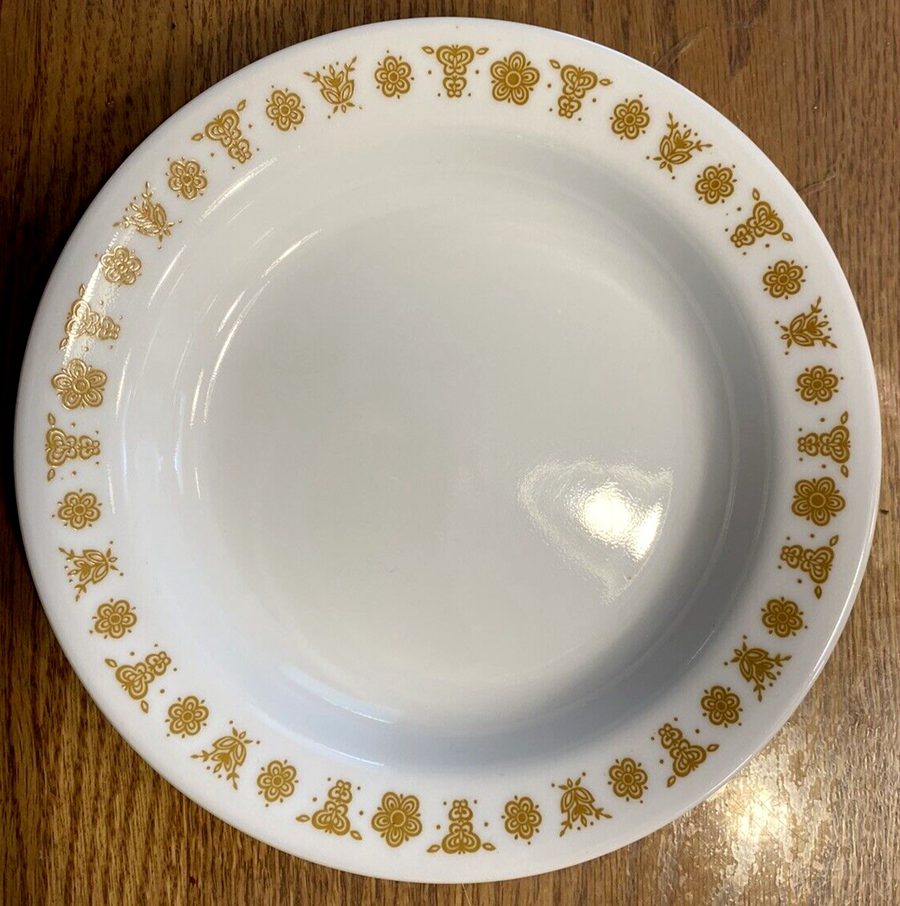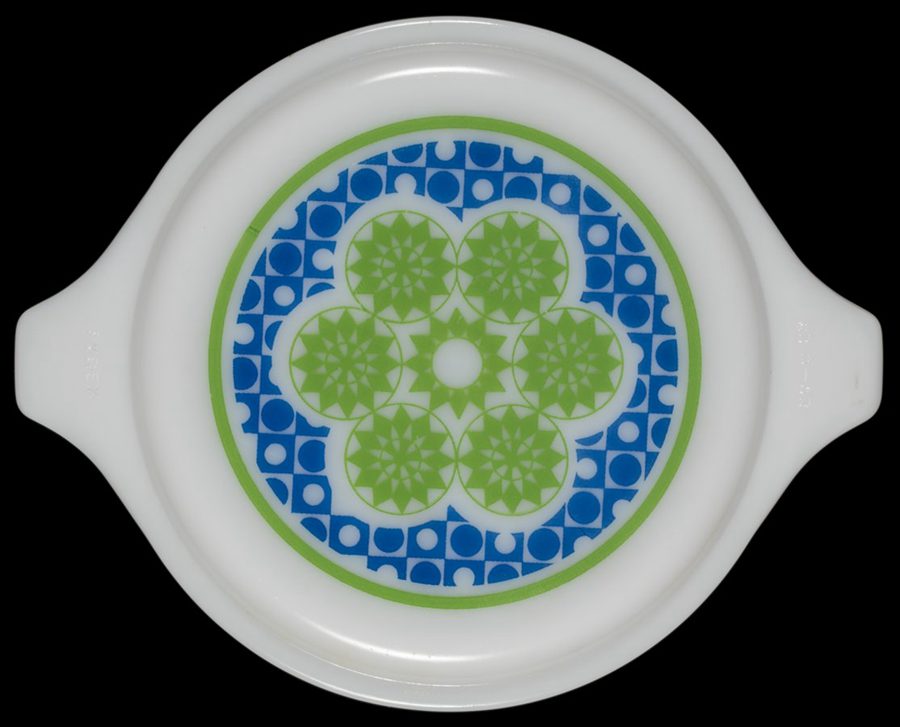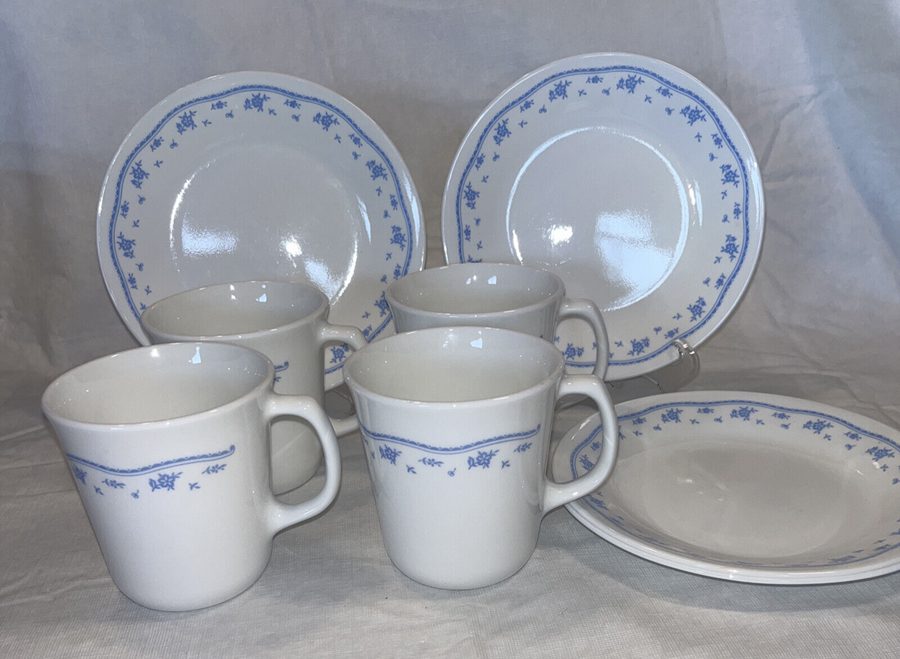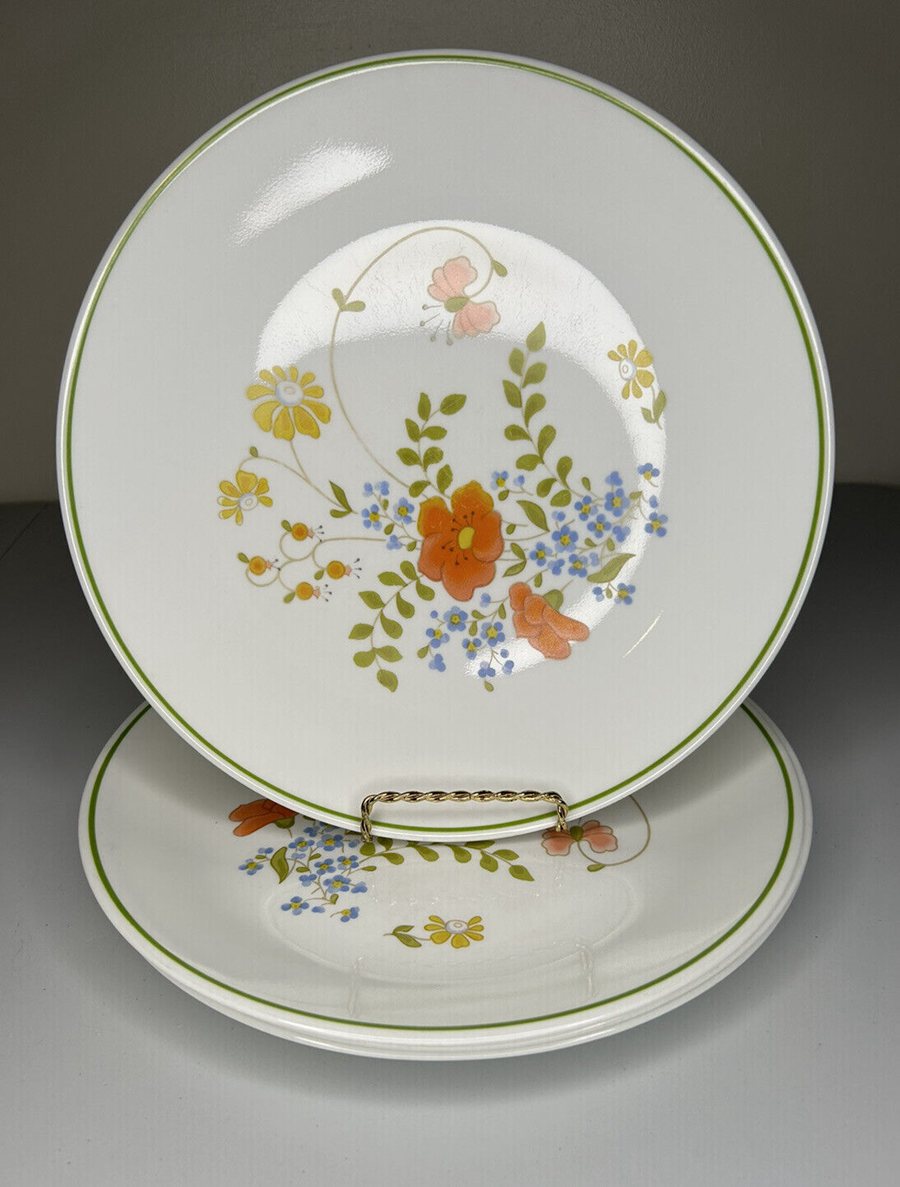Vintage Corelle dinnerware has been a household staple for decades, gracing the dining tables of many families with its versatile and timeless patterns. If you’re a collector or simply appreciate the beauty and functionality of these pieces, this Identification & Value Guide to Vintage Corelle Patterns will be a valuable resource for you.
First produced in the early 1970s, Corelle dinnerware was designed to be lightweight, durable, and stylish. With an array of patterns ranging from simple geometric designs to more intricate illustrations, there’s a style suitable for every taste. In this guide, you’ll learn about the key eras in Corelle’s history, including iconic patterns and the average value of individual pieces and full sets.
As you delve into the world of Vintage Corelle, keep in mind that the value of these dishes can vary based on factors such as rarity, condition, and demand. Now, let’s explore the captivating patterns and history that make these dishes coveted collectibles.
Table of Contents
History and Evolution of Corelle
The Inception of Corelle Dinnerware
Corelle dinnerware was first introduced in the early 1970s. Developed by Corning, the parent company also behind Corningware and Pyrex, Corelle promised a new type of dinnerware that was durable, lightweight, and stylish. The secret behind Corelle’s durability lies in its unique material called Vitrelle—a laminated tempered glass with three layers which makes it extra resistant to breakage and chipping.
Development of Corelle Patterns
Over the years, Corelle has produced numerous patterns to suit different tastes and styles. The first pattern, known as ‘Frost White,’ was a simplistic and minimal design that remains popular today. Corelle continued to develop various patterns through the ’70s and ’80s, some of which have become highly sought-after by collectors. Some notable patterns include:
- Butterfly Gold
- Spring Blossom Green
- Woodland Brown
- Old Town Blue
These patterns featured simple yet elegant designs, often incorporating nature themes such as flowers and leaves. Many of them fit seamlessly into the aesthetics popular in the mid-20th century, and some have become collectors’ items in recent years.
The Corning Connection
The Corelle brand was created under the umbrella of the Corning Incorporated company. Initially focused on glass and industrial applications, Corning transformed into a household name by venturing into consumer goods like Corningware and Pyrex. The introduction of Corelle dinnerware consolidated Corning’s position as a powerhouse within the industry.
Corelle dinnerware has enjoyed enduring popularity due to its unique combination of durability and design. By offering a wide variety of patterns and styles, Corelle has remained relevant and beloved by generations of consumers. Whether you are a casual user or a dedicated collector, the history and evolution of Corelle offer an interesting glimpse into the development of this iconic dinnerware brand.
Identifying Vintage Corelle Patterns
Date and Age
To determine the date and age of your vintage Corelle dishes, the first step is to identify the pattern. Corelle produced dishes starting in the early 1970s, and some of the initial patterns have similarities to modern minimal trends. Patterns such as ‘Frost White’ were light, rimmed, and plain. You may consult resources like Corelle Corner, a site designed for collectors, to get specific date ranges for certain patterns.
Trademarks
Look for unique trademarks or logos on your Corelle dishes that can help establish their authenticity. Corelle dishes often include a stamp on the bottom, indicating the brand name, pattern, and sometimes the manufacturing date. Make note of these details, as they can be useful in further research or discussions with authenticators.
Authenticators
If you’re having trouble identifying your vintage Corelle pattern or determining its value, consider consulting an authenticator. Authenticate your vintage Corelle on your own by conducting thorough research online or visiting local antique stores for references on similar pieces. For more accurate authentication, consult professional appraisers or experts in the field. They can provide valuable guidance and help confirm your patterns’ identity and worth.
Remember, the value of vintage Corelle can vary depending on factors such as age, rarity, and condition. Avoid making exaggerated claims and base your information on accurate research and expert consultation. By doing so, you’ll be more likely to obtain an accurate identification and estimated value for your vintage Corelle dishes.
18 Most Popular Vintage Corelle Patterns
Butterfly Gold

Butterfly Gold is a classic Corelle pattern from the 1970s, featuring golden-yellow flowers and butterflies on a white background. Because of its nostalgic charm, you might find pieces ranging from $20 to $50, depending on condition and rarity.
Old Town Blue (Blue Onion)

Old Town Blue, also known as Blue Onion, showcases a beautiful blue floral border on a white background. As it’s a fan favorite, prices for this pattern can vary from $15 to $25 for individual dishes and up to $100 for complete sets.
Spring Blossom Green (Crazy Daisy)

This fun and retro design consists of green flowers on a white background. Spring Blossom Green, or Crazy Daisy, has an average price of $15 to $30 for individual pieces and around $60 for a full dinnerware set.
Snowflake Blue
Snowflake Blue features delicate blue snowflakes or flowers on a white background. Prices for this pattern can range from $10 to $25 for individual dishes and $50 to $80 for a full set.
Woodland Brown
Woodland Brown features a brown flower and leaf motif on a beige background. Individual pieces in this rustic pattern can range from $10 to $25, with complete sets fetching up to $80.
Indian Summer
Indian Summer consists of earthy brown and orange flowers on a beige background. Pieces in this pattern can range from $10 to $20, while full sets may sell for $50 to $75.
Country Cornflower
Country Cornflower showcases a simple blue cornflower design on a white background. This pattern’s pricing is similar to other popular Corelle patterns, with individual pieces ranging from $10 to $25 and full sets around $60.
Winter Frost White
Winter Frost White is a minimalistic, solid white pattern. This versatile design can be easily mixed with other patterns. Individual pieces typically range from $5 to $10, while complete sets can be found for $20 to $50.
Butterfly Meadow
Butterfly Meadow features delicate, colorful butterflies and flowers on a white background. Prices for this pattern can range from $15 to $30 for individual dishes and $60 to $100 for a full set.
Abundance
Abundance showcases a fruit and foliage motif on a white background. Expect prices to be around $10 to $20 for individual pieces, and $50 to $80 for complete sets.
Summer Blush
Summer Blush is adorned with pink and yellow flowers, hummingbirds, and green leaves on a white background. Pieces in this pattern range from $10 to $20, while full sets go for around $60.
Memphis
Memphis features a bold, geometric pattern in black, white, and red. Pricing for individual dishes ranges from $10 to $20, with full dinnerware sets fetching around $60.
Crazy Quilt
Crazy Quilt displays a colorful geometric pattern reminiscent of a patchwork quilt. Pieces in this vibrant pattern typically range from $10 to $20, with full sets selling for around $75.
Morning Blue
Morning Blue is adorned with a simple blue flower and leaf design on a white background. Prices for this pattern can range from $10 to $25 for individual dishes and $50 to $80 for a full set.
Calico Rose
Calico Rose showcases delicate pink flowers and green leaves on a white background. Prices for individual pieces range from $10 to $25, with full sets selling for around $60.
Shadow Iris
Shadow Iris features deep purple irises on a white background. Prices for this elegant pattern can range from $10 to $20 for individual dishes and $50 to $75 for a full set.
Rosemarie
Rosemarie displays pink tulips and green leaves on a white background. This floral pattern typically costs between $10 and $25 for individual pieces, with full sets selling for around $60.
Wildflower
Wildflower showcases vibrant flowers in an array of colors on a white background. Pieces in this striking pattern range from $15 to $30, while full sets go for around $75 to $100.
4 Factors to Identify & Vintage Corelle Patterns
1. Age
When identifying and valuing Vintage Corelle patterns, the age of the pieces plays a significant role. Corelle dinnerware has been produced for over five decades, with different patterns and styles emerging over time. In general, older patterns tend to fetch higher prices in the market, as they are usually considered more valuable by collectors.
In the 1970s, Corelle patterns featured floral or geometric designs, while the 1980s saw the introduction of country-side illustrations and flat designs. The material used in the latter era is known as Vitrelle, a breakthrough in dinnerware technology that made the products much more durable and resistant to breakage.
To help you better understand the valuation of Vintage Corelle patterns based on their age, we have created the following table:
| Era | Pattern Characteristics | Average Valuation |
|---|---|---|
| 1970s | Floral or geometric designs | $100 – $200 |
| 1980s (Pre-Vitrelle) | Country-side illustrations | $80 – $150 |
| 1980s (Vitrelle) | Country-side illustrations, Vitrelle material | $60 – $120 |
It’s essential to inspect the maker’s mark on the back of the piece when determining the age of a specific item. Some patterns from the 1980s may overlap, with certain pieces marked as “Corelle by Corning” instead of “Corelle Vitrelle.” Unfortunately, there aren’t any definitive resources that list different maker’s marks used by Corelle over the years, so you might need to rely on your judgment or consult other collectors to pinpoint the age of the piece.
Keep in mind that these average valuations are not set in stone and can vary depending on factors such as the rarity of the pattern, the condition of the item, and market demand for vintage Corelle. As always, take the time to research and understand the various factors that contribute to the value of a particular Vintage Corelle pattern before making any decisions.
2. Colors
When it comes to identifying and appraising the value of vintage Corelle patterns, colors play a significant role. The colors and patterns used in the production can give you insight into the age and rarity of a particular piece, as well as its potential value. In this section, you will learn how colors affect the valuation of vintage Corelle dishes.
Vintage Corelle dishes come in a variety of colors and patterns, which make them highly collectible for enthusiasts. Some of the most popular colors and patterns from the 70s and 80s include:
- Old Town Blue: a navy blue onion floral pattern on white
- Cornflower Blue: a blue cornflower flower pattern
- Butterflies: multicolored butterflies and flowers
To provide a better understanding of how colors impact the valuation of these vintage pieces, below is a table outlining the average valuation of the dishes in different color patterns:
| Color Pattern | Average Valuation |
|---|---|
| Old Town Blue | $50 – $70 |
| Cornflower Blue | $60 – $80 |
| Butterflies | $40 – $60 |
Keep in mind that these average valuations are not absolutes and depending on the specific dish’s condition or rarity, the values can fluctuate.
Another factor to consider is the overall condition and wear of the color pattern. Pieces with their original colors intact and minimal signs of wear will generally be more valuable than those with faded or chipped colors. Additionally, dishes that include additional coordinating elements, such as matching serveware or glassware, can increase their overall value.
In summary, understanding the influence of colors and patterns on the value of vintage Corelle dishes can help you make educated decisions when expanding your collection. Consider the rarity, condition, and coordinating elements of each piece as you evaluate its worth.
3. Rarity
One of the major factors that impact the value of Vintage Corelle patterns is their rarity. Rarity can be determined by several elements such as the production period, limited editions, and discontinued patterns. In this section, you will learn about how these factors affect the value of Vintage Corelle dishes.
Vintage Corelle patterns were introduced in the 1970s, so they are not considered antique. However, some patterns have been discontinued or were produced in limited quantities, making them more valuable. Generally, the rarer the pattern, the higher the valuation.
Here is a table that provides the average valuations for Vintage Corelle patterns based on rarity:
| Rarity Factors | Average Valuation |
|---|---|
| Common Patterns (e.g. Frost White) | $20 – $50 |
| Discontinued Patterns | $50 – $100 |
| Limited Editions (e.g. Special Edition) | $100 – $200 |
| Very Rare Patterns | $200 – $300 |
Keep in mind that these are average valuations and the actual value of a specific dish or set may vary depending on other factors, such as condition, size, and demand. Additionally, specific patterns might hold sentimental value to some collectors, which can also influence the value.
When determining the rarity of a Corelle pattern, first look for a Corelle or Corning logo on the bottom of the dish. Patterns manufactured before 1998 may have a “CorningWare” backstamp. You can then reference the pattern name or design to determine its production period and rarity level.
To summarize, understanding the rarity of Vintage Corelle patterns and being able to identify them correctly helps you in estimating their value. This knowledge can be crucial when you are looking to purchase or sell dishes or expand your collection.
4. Condition
When assessing the value of Vintage Corelle patterns, the condition of the dishes plays a crucial role. Keep in mind the following factors when evaluating the value of your Vintage Corelle dishes based on their condition:
- Chips and Cracks: Plates with chips or cracks lose a significant amount of their value. Ensure you carefully inspect your Corelle dishware for any signs of damage before purchasing or appraising.
- Fading of Pattern: A common issue with older Corelle dishes is the fading of the decorative patterns. Dishes displaying bright, clear patterns will typically have a higher value than those with washed-out or faded designs.
- Scratches and Utensil Marks: Look for scratches and utensil marks on the surface of the plates. Although minor scratches are expected with daily usage, excessive marks can decrease the value of the dishes.
Here is a valuation guide to help assess the impact of the condition on the value of Vintage Corelle dishes:
| Condition of Dish | Average Valuation |
|---|---|
| Mint, No Signs of Use | $80 – $150 |
| Minor Wear, Slight Fading | $50 – $80 |
| Moderate Wear, Pattern Fading | $30 – $50 |
| Chips, Cracks, or Heavy Fading | $10 – $30 |
Keep these factors in mind when assessing the condition of your Vintage Corelle dishes. This will help you accurately appraise their value, allowing you to make an informed decision when adding to your collection or selling your items. By paying attention to the condition of your dishes, you can ensure that you are investing in quality pieces and maintain the value of your collection.
Final Thoughts
In your search for vintage Corelle patterns, it’s important to be aware of the various eras that produced unique and distinctive designs. The 1980s, for example, focused on country-side illustrations and flat designs, with products made of Vitrelle.
To identify Corelle dishes, look for a Corelle or Corning logo on the bottom of the dish. If it was manufactured before 1998, you may find a “CorningWare” backstamp instead. Some iconic patterns to look out for include the blue Cornflower pattern, which was popular from the 1950s to the 1980s.
When considering the value of vintage Corelle dishes, keep in mind that they are only worth what someone is willing to pay for them. That said, a majority of listings on eBay fall between $25 and $100, with complete sets averaging around $60. Individual pieces, on the other hand, can range from $8 to $10. A full dinnerware set with patterns from these eras can cost anywhere from $120 to $1000, depending on its condition and rarity.
As you continue your journey in collecting and identifying vintage Corelle patterns, keep these tips and insights in mind. They will help you make informed decisions about which pieces to add to your collection and give you an idea of their potential value. Happy collecting!
FAQ
How can I identify my Vintage Corelle pattern?
To identify your Vintage Corelle pattern, pay close attention to the design and colors of the dishes. You can also compare them with images of known patterns online or in collector’s guides. You’re looking for unique markings, logos, or specific design elements that will help you determine the pattern’s name and era.
What factors impact the resale value of my Vintage Corelle dishes?
There are five essential factors that impact the total resale value of your Vintage Corelle dishes:
- Pattern name and design
- Date and age of the dishes
- Condition of the dishes
- Rarity or scarcity of the pattern
- Demand for the particular pattern
Keep these factors in mind while trying to assess the value of your dishes.
What is the typical resale value of Vintage Corelle dishes?
Although some articles might claim that Vintage Corelle dishes are worth thousands of dollars, the majority of listings on platforms like eBay fall between $25 and $100. A complete set might sell for around $60, but prices can vary depending on the factors mentioned above.
How do I clean my Vintage Corelle dishes?
To clean your Vintage Corelle dishes, use a mild dish soap and warm water. Gently scrub the dishes with a soft cloth or sponge, being careful not to use abrasive materials that might scratch the surface. Rinse thoroughly and dry with a soft, lint-free cloth.
Where can I find more information about specific Vintage Corelle patterns?
You can find more information about specific Vintage Corelle patterns by researching online and consulting collector’s forums, websites, and books. There are also social media groups and communities that focus on sharing and exchanging information about Vintage Corelle dishes.
Remember, the more informed you are about your Vintage Corelle dishes, the better equipped you’ll be when it comes to determining their value and caring for them.
























